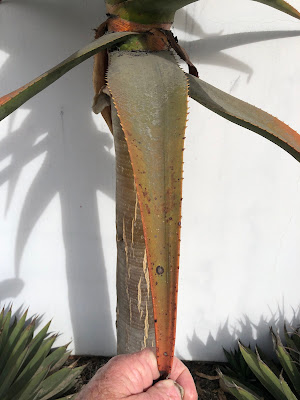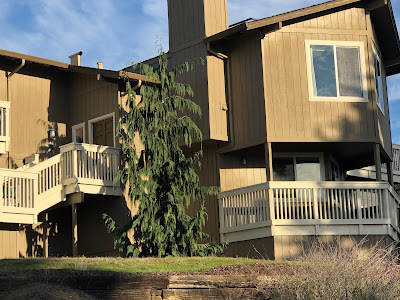I have been looking at these two Oaks for years and I think I am close to getting to the correct identification. I always guessed they were hybrids between the Coast Live Oak and California Black Oak but the difficulty was (is) the amount of hybridization and genetic studies that Q. agrifolia has been part of makes it difficult to come up with the name. Additionally, the experts are not in agreement.
My favorite old book "Pacific Coast Trees" by McMinn and Maino lists one hybrid, Q. morehus. More recent publications suggest there are more. But, perhaps the botanical variety oxyadenia is not really a distinct variety which eliminates the hybrid group.
Regardless of the name, I will continue.
Large semi-evergreen tree growing to 50' with a broadly oval outline. Often with multiple main branches. For those local, this one is on Bonita close to the Fire Department end.
This one has a different shape due to it growing up against a house.
Misidentification: Quercus kelloggii though those leaves are bigger, broader, more deeply lobed, and the acorn cap is different.
CalFlora calls this tree Q. Xchasei.
There was a species originally named Q. chasei (McMinn, 1949)
Kew Gardens considers the proper name as Q. Xganderi with Q. agrifolia var. oxyadenia and Q. kelloggii as the parents.
Cal Poly SLO does not mention Q. Xchasei
https://selectree.calpoly.edu/tree-detail/1727
Observers on Inaturalist refer to Q. XChasei as a synonym of Q. Xganderi though some use the prior as the proper name.
Location























































